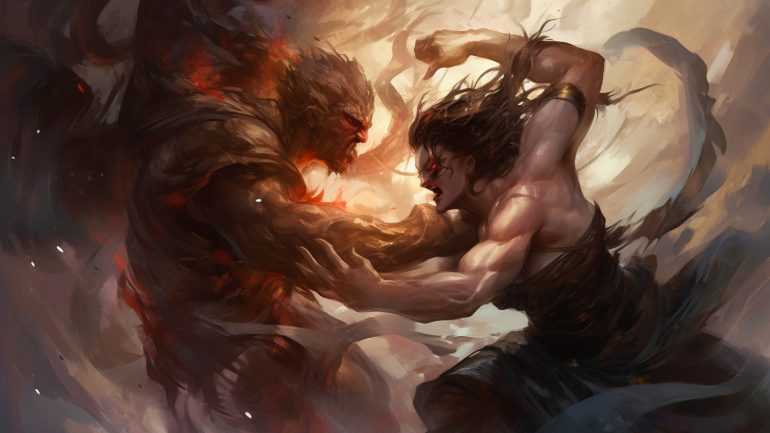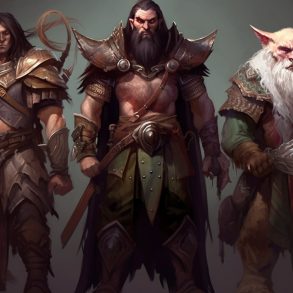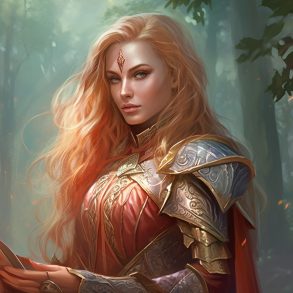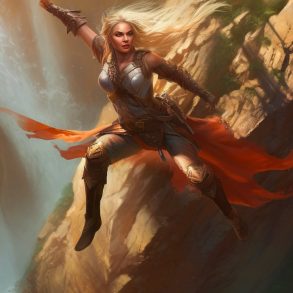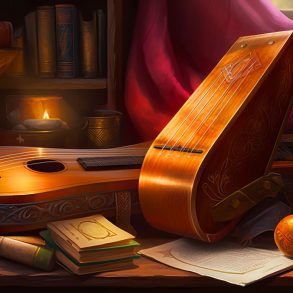Grappling in 5E can be a confusing topic, but it can be an enjoyable and effective tactic and is surprisingly accessible. So fear not, as this article will tell you all you need to know to lucha with the best of them, stylish mask optional.
How Grappling works
Grappling revolves around the Grappled condition, which reduces the affected creature’s speed to 0 and prevents them from benefiting from any speed increases. This condition is automatically broken if the grappled creature is moved out of the reach of what is grappling it, or the grappler becomes Incapacitated.
Any creature can grapple another creature by making a special attack with the Attack action, doing so requires a free hand and for the targeted creature to be no more than one size category larger than you. Instead of an attack roll, you roll an Athletics check contested by the target’s Athletics or Acrobatics check, the target decides which to use.
A grapple attempt consumes a single attack as part of your Attack action, so if you can make multiple attacks with that action, such as with the Extra Attack feature, you can still make an attack, shove, or try to grapple again. Once you have a creature grappled, you can drag it around as you wish, but you can only move at half your speed when doing so.
The most common way a PC may experience the Grappled condition is as a rider attached to a monster attack or a spell effect, such as Bigby’s Hand. However, any creature is capable of attempting to grapple, should the DM wish to do so.
How to be better at Grappling
With grappling tied directly to Athletics checks, any enhancements to skills, or Athletics specifically, will greatly improve your chances of locking down the bad guys. Here is a sample list of ways to improve your grappling game:
- Rage (Barbarian class feature) – This gives you advantage on all Strength-based checks and being a Barbarian means you’ll likely have a high Strength score to boot.
- Expertise (Rogue and Bard class feature) – Doubling your proficiency modifier in Athletics is an excellent way to make your grapple attempts more reliable and naturally scales as you gain levels.
- Enlarge/Reduce (2nd level spell) – The Enlarge portion of this spell is the best option from a grappling point of view, as you don’t need the monster to fail a saving throw. Whilst buffed by this spell you will be able to grapple monsters one size larger than you normally would be able to and you would have advantage on the Athletics checks required. Allies can cast this on you, or duergar characters can cast it on themselves innately.
- Hippo Build (Giff racial feature) – Similar to Rage, this gives giff characters advantage on strength-based checks, Athletics included.
- Bardic Inspiration (Bard class feature) – If inspired by a Bard, you can add a die to your grapple check to boost the result. This die starts as a d6 and progresses to a d12, dependent on the Bard’s level.
- Cutting Words (College of Lore Bard subclass feature) – Lore Bards can use this feature to reduce the total of a monster’s check to avoid/escape a grapple.
- Unarmed Fighting (Fighting Style) – This optional style from TCoE allows you to automatically deal 1d4 bludgeoning damage to one creature you’re grappling at the start of your turn.
- Battlerager Armor (Path of the Battlerager Barbarian subclass feature) – One of the more obscure Barbarian subclasses, this feature deals 3 piercing damage to a creature when you succeed on a check to initiate a grapple.
- Secondary Arms (Thri-kreen racial feature) – This feature allows you to grapple with your primary arms, whilst still being able to use two-weapon fighting to dispense a flurry of attacks.
- Grappling Appendage (Simic Hybrid racial feature) – This feature is a 5th level option for the simic hybrid’s Animal Enhancement feature and allows you to grapple a creature whilst still having two hands available for two-handed weapons and two-weapon fighting.
How to roleplay Grappling
Need some help roleplaying Grappling? Here are some examples to help you out:
- As the enemy charges towards you, you quickly react by grabbing onto them and trying to wrestle them to the ground. Roll for your grapple check to see if you succeed in getting a firm grip.
- You leap onto the back of the hulking ogre, wrapping your arms around its neck and squeezing with all your might. The creature roars in anger and tries to shake you off – roll for your grapple check to see if you can hold on.
- With lightning-fast reflexes, you dart towards the rogue and tackle them to the ground, pinning them beneath you. Roll for your grapple check to see if you can keep them restrained.
- The towering giant looms over you, its massive arms raised to strike. You quickly lunge forward and wrap your arms around one of its legs, pulling with all your might. Roll for your grapple check to see if you can knock the giant off balance.
- You lock eyes with the burly orc, both of you sizing each other up. Suddenly, you charge towards it and try to tackle it to the ground. Roll for your grapple check to see if you can overpower the orc’s strength.
We hope that this article has helped coach you for your next world championship pay-per-view. If you’re a new player learning the game, then check out our how to play section, or if you’re here because you want to build a grappling Barbarian, check out our Barbarian 5E guide. Until next time, may your entrance music be epic, and may your enemies smell what you’re cookin’.
What is Grappling in DnD 5E?
Grappling is a mechanic that allows you to hold a creature still or drag it around with you. See the article above for full details.
How to improve Grappling in DnD 5E?
Anything that improves your Athletics checks would help, such as a Rogue’s Expertise or a Barbarian’s advantage from Rage.
What can you do while Grappling in DnD 5E?
You can do anything that doesn’t require two hands, although moving must be done at half speed as you drag the grappled creature with you.
